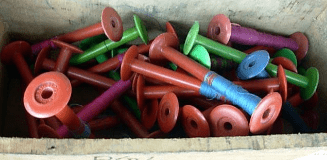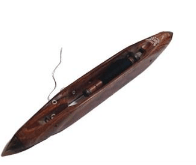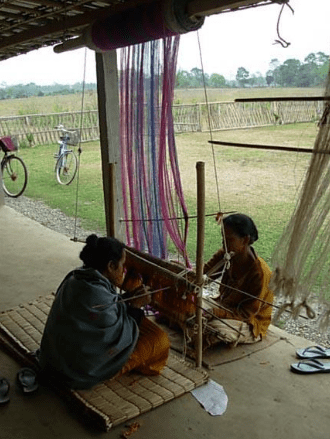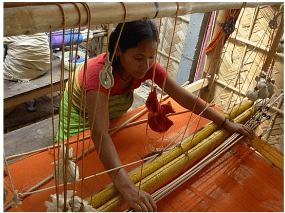Rich History and Culture of Bodo Weaving
Bodos are known as one of the finest weavers in entire North East region. This traditional art of weaving has been isolated as traditionally followed custom amongst the Bodo women for many centuries. Today this traditional Bodo motifs and colours have greater dimensions to its potential.
The fabric produced by the weavers needs skill up-gradation, and the power of information technology to give boost to its handloom (weaving) sector in Bodol and Territorial Council (BTC). The present govt. is trying hard to set up various handloom units in order to provide income option for the below poverty line population but it has not been able to implement it in an organized manner.
Within Kokrajhar districts there are numbers of weaving units run by individual, SHGs, NGOs and enterprises. Almost everyone is following the same pattern of weaving as traditionally used fabric/materials.
History & Global Presence of Bodo Weave
Long before the Mahabharata (which incidentally provides the earliest historic reference of Assam, then known as the Kamrupa kingdom ruled by the Narka kings), ancient civilizations have inhabited the fertile plains of the Brahmaputra valley.
Among them are the Bodo, a Mongoloid stock who at some point in human history migrated from the Bod province of central Tibet. The Bodo Empire spread throughout the region, from Koch Behar in North Bengal to Sylhet in Bangladesh stretching all the way till Tripura.
Over the centuries, many sub-tribes of the great Bodo race, like the Kachari, Koches and Chutia, ruled over different parts of Assam, enriching its culture. The sixteen Bodo sub-tribes like Dimasa Kachari, Bodo Kachari, Rabha, Deori and Garo are spread over different parts of Assam and North East. Of these the Bodo Kacharis, popularly referred to as Bodo, form the largest sub-tribe.
Region of Bodo Weave
Assam, a state in the northeast of India, with Dispur as its capital, is located just below the eastern Himalayan foothills. It is surrounded by the other north-eastern states: Arunachal Pradesh, Nagaland, Manipur, Mizoram, Tripura and Meghalaya.
Assam also shares international borders with Bhutan and Bangladesh. The tribes of Assam engaged in weaving are Bodo, Mishing, Karbi, Dimasa and Lalung. Of these the Bodos and Mishings are the largest and the most prominent tribes.
Bodos are settled in the north-west corner of Assam near the Bhutan border, in Kokrajhar and Bongaiga on districts, about 4 hours from Guwahati. Mishings are settled along the river Brahmaputra, spread over Golaghat, Jorhat, Lakhimpur and Dhemaji, districts which can be reached via NH 37, at a distance of about 350 km or a 7 to 9 hour drive from Guwahati.
Guwahati is the commercial capital and is most accessible and well connected through air, rail and roads to most of the important cities of the country. By air Guwahati is two and half hours from Delhi and by rail the best link is Rajdhani Express which takes 28 hours to reach Guwahati from Delhi. Most of the clusters are well connected and accessible via state and national highways.
Community of Bodo Weave
The Bodo follow Bathou religion, the religion of five principles or thoughts, which has a close affinity to Hinduism. Every courtyard has a Bathou altar, consisting of a Sijou tree fenced by bamboo strips, where prayers are offered to their Gods.
The five spurs of the Sijou tree signify the five elements of nature and the five guiding principles of the Bathou religion. To the North of the altar is the main house, called Nomano, where the family members reside, with the kitchen next to it.
The granary -Bakri is located in the east signifying the important role it plays in the culture of this agrarian community. Weaving is an integral part of the Bodo culture, with every household having a handloom. Women mainly weave adokhna, .
which is a traditional sari-like wrap worn by them or a gamcha which is a wrap-around worn by the men. Besides they are extremely skilful at weaving cloth from Endi and Muga, indigenous silk forms of Assam. Culture plays an equally important part in their life, with music and dance being second nature to these fun-loving people.
Over the centuries they have evolved many types of folk songs and dances for devotional, festive and entertainment purposes.
Raw Materials of Bodo Weave
The basic raw material used is acrylic, cotton and sometimes silk. Cotton cultivation, yarn spinning and dyeing was traditionally practiced by the tribal’s, but gradually the weavers discontinued these activities for various reasons –frequent floods in the area, resettlement; and the easy availability of mill made dyed yarns.
It has been 8 to 9 years since the weavers have gradually shifted from cotton to acrylic yarns. This shift is due to several factors such as non-availability of good quality cotton on the one hand, and durability, easier usage for the weaver and 100% wash fastness of the acrylic yarns on the other.
that has made acrylic the preferable yarn type. Most of the yarn is procured from local markets or from traders in Fancy Bazzar or Pan Bazzar in Guwahati, most of which is supplied by Southern India. Yarns are also sourced from NHDC (National Handloom Development Corp.), which provides the yarns at mill gate price.
Tools and Implements
The tools necessary for weaving consist of yarns (acrylic, cotton or silk), spindle, spinning machine, warp drum or pegs and a loom (loin or throw-shuttle). Most of these tools are made of bamboo and sometimes wood.
BOBBIN
SHUTTLE
VILLAGE LOOM
VILLAGE HOOK
Process
Tribal women weavers use both loin looms and throw-shuttle looms. Most of the Bodo Women weave on throw-shuttle looms. Bodo weaves is set warp-ways on the loom i.e. once the design is set on the looms it remains throughout the yard age.
The looms are simple and easy to make. The process on both the looms can be summed ups a follows:
Loin loom
A common loin loom consists of:
•Front bar-The front bar is a circular wooden bar put in between two loops fixed to the wall of the house.
•Breast bar-The warp is fixed between the front and the breast bar. The breast bar is also a circular wooden bar.
•Sword-The sword is a flat wood piece and rests in front warp, one end of this sword is blunt and the other end is pointed.
•Heald bar-It is made of bamboo and is circular in shape
•Circular bamboo bar-This is another circular bamboo bar but is a little longer than the former and is placed after the heald-bar.
•Lease rod-It is a rod or a bar positioned between front bar and circular bar, separating the warp in two sets.
•Back strap-This is made either of leather or cloth. There are two loops at the ends of the back strap, which are attached to the notches of the front warp bar.
Nearly all types of weaves can be woven in the loin loom. The possibilities of weaving pattern in a loin loom are unlimited. The weaver sits with a loom fixing the back strap, keeping her legs against the footrest, which is adjustable for keeping the loom in tension.
The weaving in the loin loom is governed by the shedding motion, the picking motion and the beating motion. The healed bar is lifted up with the left hand and the circular bamboo bar is pressed down by the right hand simultaneously.
The sword is then placed in the shed and kept vertical and the weft is passed from the right side by the right hand by means of the shuttle and picked up by the left hand. The weft is then beaten up by the sword.
The sword is then taken out and the center shed is produced through which the shuttle is passed by the left hand and is picked up by the right hand. The sword is then again placed to beat the weft. The process is repeated. When the weaving just begins, the two-bamboo splits work as the first weft.
This is the technique of plain weave of one up and one down and the process is continued until any pattern is woven.
Throw-shuttle loom of Bodo Weave
The throw shuttle is a loom in which the shuttle is thrown across the shed by hand. The loom is fitted to four posts fixed on the ground. The shedding is effected by a set of healds operated by the foot. The beating up of the weft is done by a bamboo reed to a sleigh.
The important parts of the throw shuttle loom are
- Sleigh or slay-It is a wooden frame accommodating the shuttle box, reed and swings forward and backward. In its forward motion the last pick of weft is beaten.
- Shuttle box-It is a wooden case for the shuttle with the spindle and a picker. The shuttle box is grooved inside lengthwise to accommodate the picker. The top of the box is open and the shuttle rests in the box for the intermediate period between two successive picks.
- Shuttle and Spindle-The shuttle is placed vertical to the weft and passes through in the process of weaving. When the loom is stationary, the shuttle remains in the shuttle box. The shuttle contains the spindle on which the weft yarn is wound.
- Picker-It is a piece of leather placed in grooves inside a shuttle box on which the spindle is kept. The picker is used to give blow to the shuttle to drive it from one box to the other.
- Reed-The reed is the comb through which the warp passes.
- Heald-Healds are required to form a shed, which contains a series of twin loops.
- Treadle-The treadle is a pedal or lever to which a heald is connected by means of cards.
- Lease rods-The division of warp threads into one, two and two, and so on is termed as base. Two rods pass between these divisions of warp and are known as the lease rod.
- Warp beam-The roller upon which the warp yarn is wound and fitted on the bottom at the back of the loom is termed as warp-beam or weaver’s beam.
- Fabric beam-The roller fitted in front of the loom, upon which the cloth is wound while weaving is the fabric beam.
It consists of a hollow cubic structure with four vertical posts, one at each corner. These posts have four sides and there is a notch on each post. On these notches lie the cloth and the warp beams.
On the lower half of this hollow structure, there are two horizontal wooden bars connecting the vertical posts on each side. There is a wooden bar connecting the upper ends of two posts on two sides of the operator on which is kept a circular bamboo pole. On this bamboo pole a string is rolled.
The free ends of which tie the heald rods. The heald consists of two string loops crossing one another. The warp beam and the cloth beam are circular wooden beams and on one side, it contains a hole. A bamboo-stick is passed through this and put against the horizontal beams fixed at the lower half of the wooden posts.
This is known as the break, which keeps the warp, and the cloth beam fixed on a particular position. The reed consists of bamboo teeth kept tight by two bamboo frames.
Motifs
The traditional motifs used by the Bodo are mainly inspired by nature –water hyacinth, spinach flower, tortoise, mountain, pigeon’s eye, peacock and fingers to name a few. The Bodo colors are shades of yellow to red as the base, with green or blue as the accent, and floral patterns inspired by nature.
Product and Their uses
The product range of the artistic textiles of Assam includes the traditional costumes viz. mekhela, chador, doKHona and risha, saris, shawls, kurtas, dress material, cushion covers and yardage fabric.
CUSHION COVERS
OLD DOKHONA
Innovations
Internationally renowned fashion designer and former super model Bibi Russell has joined hands with the ethnic Bodo women of the northeastern Indian state of Assam in creating a new line of lifestyle products that will blend traditional Bodo culture and high fashion.
Bibi Russell, who was associated with leading international brands and fashion shows in the 1970s and 80s, will train Bodo women working for Weaving Destination in modern design techniques and a range of skills that will help them market their products as a premium label. Weaving Destination is part of Women and Wealth Project,
a regional social enterprise led by the United Nations Development Program (UNDP) and the Population and Community Development Association (PDA) of Thailand, aimed at the socio-economic empowerment of women living with HIV. Two groups of women in India and one group in Cambodia are part of this initiative.
Challenges:
•Organization of the existing weavers: Most of the weavers spread across several villages are not organized. These weavers need to be informed of the need for forming collectives and the focus should be on organizing them in groups. The formation of SHGs is essential for the economic stability of the weavers.
Alongside these, the existing weaver groups with organizations like ANT, NEST can also assist the weavers.
Technical and tool up gradation:
Most of the looms are loin looms or throw shuttle looms which have low productivity and less durability. To increase the productivity so as to start up the commercialization of the activity, the looms need to be upgraded to fly-shuttle frame looms.
For this, the training and looms have to be provided to these weavers, which can be done with the assistance of the already existing organizations in the region. Technical support needs to be given on loin looms to increase their efficiency.•
Better and economical transportation facilities to link with markets: As high transportation costs tend to be the main hindrance in connecting with the bigger markets outside of Assam, the question of transportation needs to be addressed collectively.
Credit facilities:
Most of these weavers cannot access any kind of credit system due to lack of knowledge, illiteracy or the remoteness of their location. Besides, the schemes that are available have either high rates of interest or inflexible terms,
which make the weavers reluctant to use these credit facilities.
Infrastructural facilities:
The weavers do not have access to any infrastructural support such as common facility centers, dyeing units, finishing, packaging and inventory management system.
also, storage setups are essential so as to prevent the woven fabrics from being damaged by the moisture.
•Product and design development: The restricted product range needs to be expanded.
Design development programs need to be organized and conducted, which include high end contemporary products for a larger market along with products with low pricing-high marketability for the local markets. Help is also needed for the weavers to better understand the ever-changing market scenario and adapting to its needs.
Marketing linkages:
The existing marketing channels need to be strengthened, as well as new channels provided for the weavers. The weavers need to be exposed to the various marketing platforms so as to have a firsthand review of their products by the customers.
Raw material banks:
Yarn depots or distribution centers need to be set in place, so as to streamline the raw material procurement process and to ensure and regulate availability, quality control and price range of the yarns.










